Clinical Resources
Here is a growing list of tools that I use in gathering clinical data and with patients/clients. If you use any of these, make sure to acknowledge the source. Also note that many of these resources are copyright their respective owners, and are provided for informational use only. Therefore, I believe that this constitutes "fair use" as defined by law. Please respect the owners' copyrights.
 2-Process Model (Handout): Originally developed by Borbely, this model helps illustrate sleep-wake regulation in the context of circadian rhythm. (Download)
2-Process Model (Handout): Originally developed by Borbely, this model helps illustrate sleep-wake regulation in the context of circadian rhythm. (Download)
 3-P Model (Handout): Originally developed by Spielman, this model explains how insomnia develops and identifies perpetuating factors as the focus of treatment. (Download)
3-P Model (Handout): Originally developed by Spielman, this model explains how insomnia develops and identifies perpetuating factors as the focus of treatment. (Download)
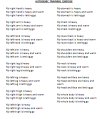 Autogenic Training Exercise: This exercise is sometimes helpful for individuals who have difficulty falling asleep. It involves saying phrases about your body and how it is feeling, which have been shown to be relaxing. (Download)
Autogenic Training Exercise: This exercise is sometimes helpful for individuals who have difficulty falling asleep. It involves saying phrases about your body and how it is feeling, which have been shown to be relaxing. (Download)
 Breathing Exercise: This handout walks patients through a breathing exercise. No handout is good enough to teach diaphragmatic breathing, but I use this as a reminder for people to take home.
Breathing Exercise: This handout walks patients through a breathing exercise. No handout is good enough to teach diaphragmatic breathing, but I use this as a reminder for people to take home.
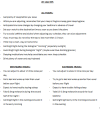 Jet Lag Tips (Handout): This handout includes a list of tips for helping to combat jet lag. Although individual situations vary, this list may be helpful and can be customized. (Download)
Jet Lag Tips (Handout): This handout includes a list of tips for helping to combat jet lag. Although individual situations vary, this list may be helpful and can be customized. (Download)
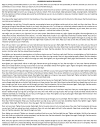 Progressive Muscle Relaxation Script: This script walks patients through a complex exercise where they tense and relax various muscle groups. (Download)
Progressive Muscle Relaxation Script: This script walks patients through a complex exercise where they tense and relax various muscle groups. (Download)
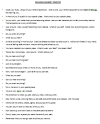 Relaxing Imagery Script: This script walks patients through a complex exercise where they imagine a relaxing scene. Using their senses, they engage this image and make it richer. This can be a powerful relaxation technique if used properly. (Download)
Relaxing Imagery Script: This script walks patients through a complex exercise where they imagine a relaxing scene. Using their senses, they engage this image and make it richer. This can be a powerful relaxation technique if used properly. (Download)
 Sleep Diary (Handout): This is an example sleep diary for use with patients to record their sleep. It holds 1 week of data and captures time in bed, sleep latency, total sleep time, awakenings, wake after sleep onset, overall sleep quality and morning sleepiness. (Download)
Sleep Diary (Handout): This is an example sleep diary for use with patients to record their sleep. It holds 1 week of data and captures time in bed, sleep latency, total sleep time, awakenings, wake after sleep onset, overall sleep quality and morning sleepiness. (Download)
Sleep Diary from Clinic (Handout): This is the handout that I use with patients in my clinic to record their sleep. It holds 1 week of data and captures time in bed, sleep latency, total sleep time, awakenings, wake after sleep onset, overall sleep quality and morning sleepiness. Because many patients also have comorbidities, it also tracks medications, naps, and physical/mental symptoms. (Download)
Sleep Diary Basic (Handout): This is a basic sleep diary with only necessary information to track sleep continuity. (Download)
Sleep Diary (Spanish Handout): This is a Spanish version of the basic sleep diary. (Download)
Sleep Diary (Excel Template): This Excel template goes with the handout. Fields in red are automatically computed so they should not be edited. Highlighted fields are weekly averages. Hidden columns are for computations. Times should be entered with hours, minutes and AM/PM separately (except midnight is 0:00 AM instead of 12:00 AM). (Download)
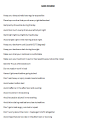
Sleep Hygiene Tips (Handout): This is a handout that lists all of the useful sleep hygiene tips. Note that these may not apply to everybody, but this list is easy to edit and customize. (Download)
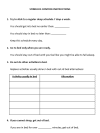
Stimulus Control (Handout): This is a handout that can be used to aid in Stimulus Control Therapy. It includes basic stimulus control instructions, suggestions for out-of-bed activities, and other guidelines for the patient to participate in therapy. (Download)






